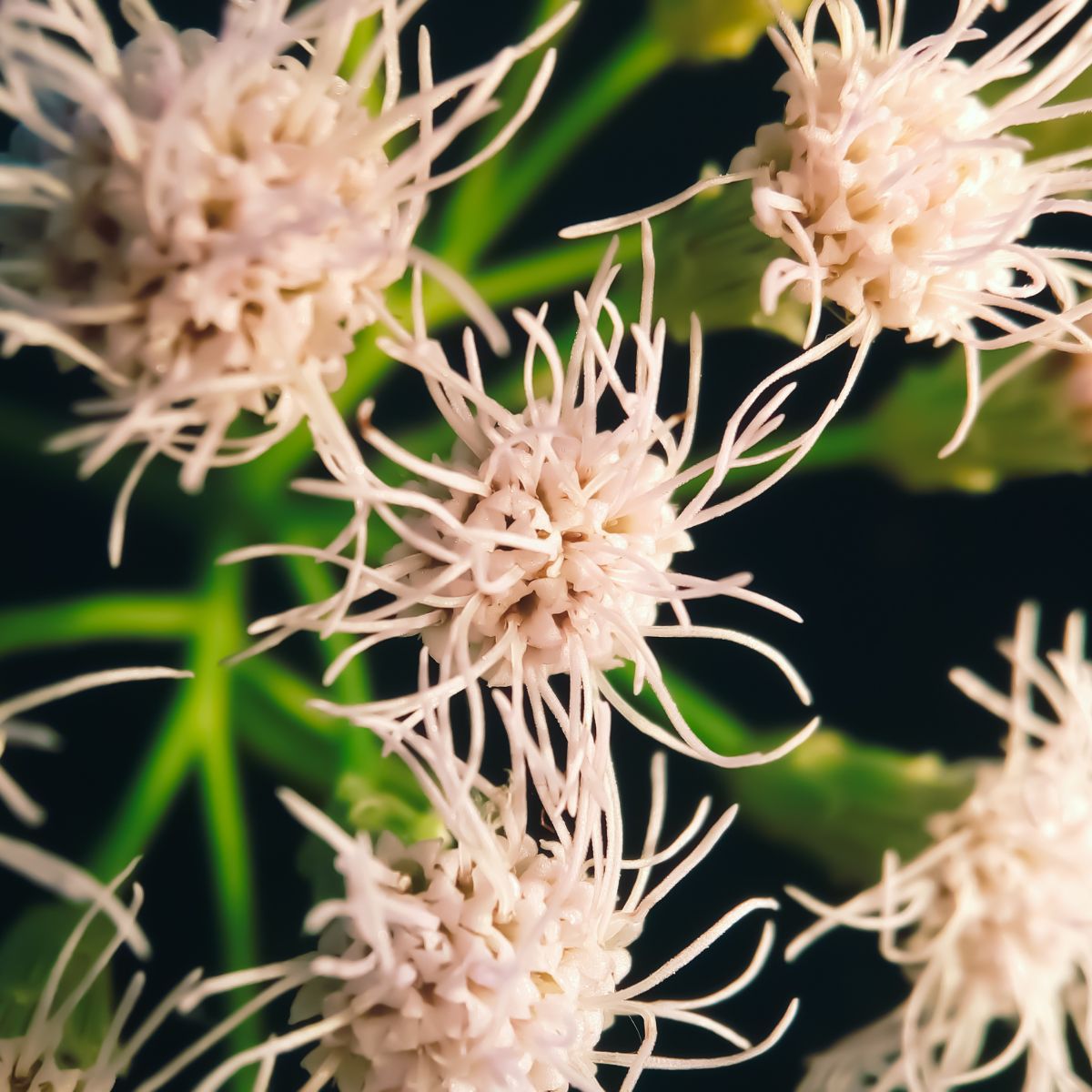Jack In The Bush (chromolaena odorata), commonly known as Siam weed, is a perennial shrub that belongs to the Asteraceae family. It is native to the Americas but has spread to many parts of the world, including Africa and Asia. Despite its attractive appearance, this plant is considered a noxious weed and invasive species in many regions.

Read Next
Other Names
Jack-In-The-Bush, aka Chromolaena odorata, commonly known as Siam weed, has many other names depending on the region or country. Some of the other common names for Chromolaena odorata include:
- Bitter bush
- Christmas bush
- Devil weed
- Siam weed
- King's cure-all
- Triffid weed
- Wild sage
- Yellow top
Description
Jack In The Bush grows up to 6 feet tall and has hairy stems that bear leaves with jagged edges. The leaves are about 4 inches long, and 2 inches wide and are arranged opposite each other on the stem.
The plant produces clusters of small, white, or purple flowers that bloom from August to November. The flowers are followed by small, black seeds that can be dispersed by wind or animals.



Invasive Nature
Jack In The Bush (chromolaena odorata) is a fast-growing and aggressive plant that can quickly take over areas that have been disturbed, such as roadsides, abandoned fields, and forest edges. The plant produces chemicals that inhibit the growth of other plants, leading to the displacement of native species and the reduction of biodiversity.
Ecological Impact
The presence of Jack In The Bush can profoundly impact the ecosystems it invades. The plant can alter the nutrient balance in the soil, and reduce the availability of resources for other plants and animals. This can lead to changes in the structure and function of ecosystems and can have long-term effects on the environment.
Medicinal Properties
Despite its invasive nature, the Jack in the bush plant has been used for centuries in traditional medicine to treat a variety of ailments, including fever, cough, and diarrhea. The plant contains several bioactive compounds, including flavonoids and sesquiterpenes, that have anti-inflammatory, antibacterial, and antifungal properties.
Studies have shown that extracts of the plant can be effective in treating skin infections, wounds, and respiratory infections. However, it is important to note that the plant can also have toxic effects on the liver and kidneys when used in large doses.



Control Measures
Due to its invasive nature, Jack In The Bush is often targeted for eradication or management by government agencies and conservation groups. Control measures include manual removal, herbicide application, and biological control methods, such as the introduction of natural predators and parasites that feed on the plant.
Conclusion
Jack In The Bush (chromolaena odorata) is a fascinating plant with a complex ecological and cultural history. While it has been used for centuries in traditional medicine, its invasive nature and negative impact on native ecosystems make it a challenging plant to manage.
As with all invasive species, it is important to take steps to prevent the spread of Siam weed and to promote the growth of native plants and ecosystems.





Comments
No Comments